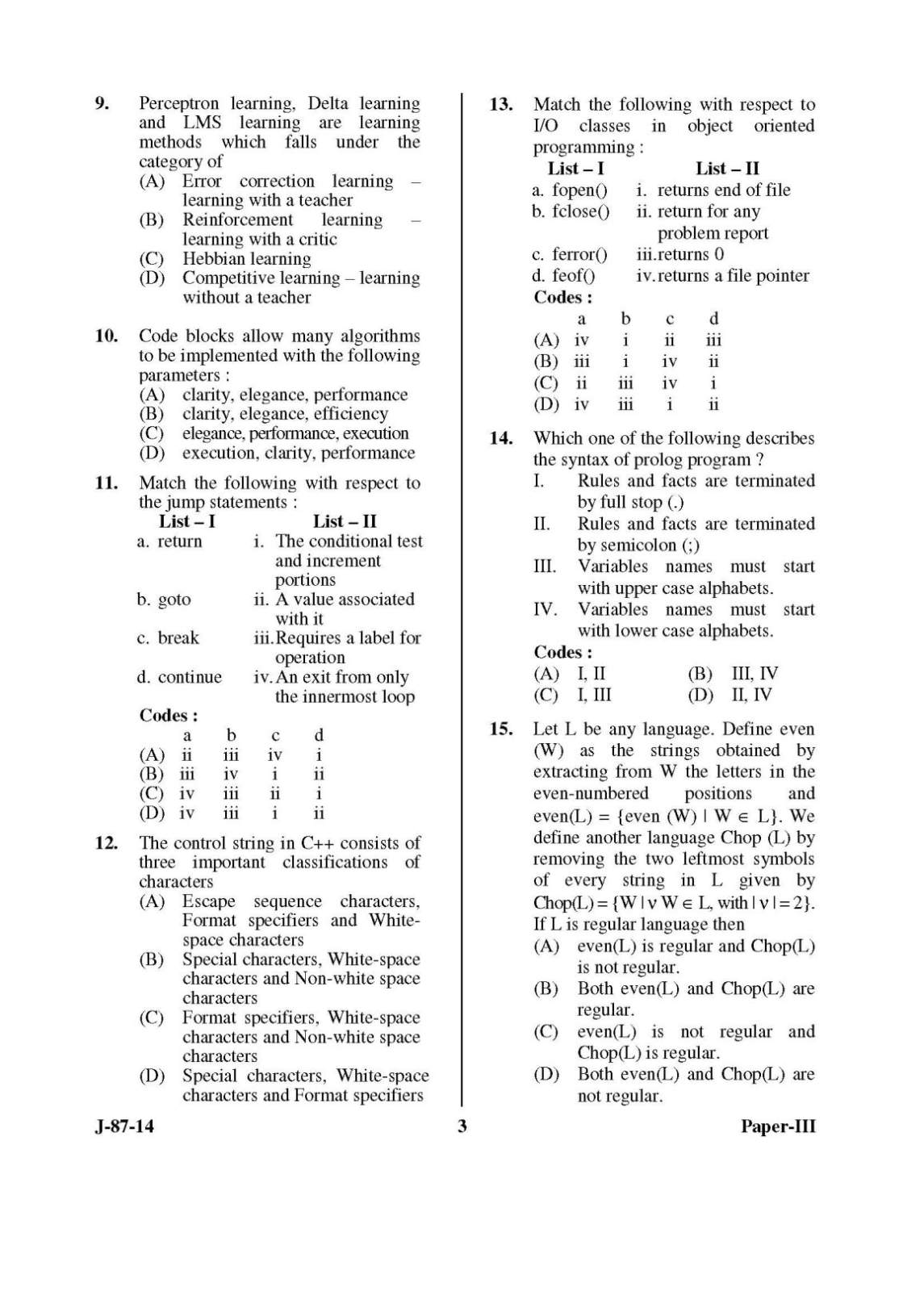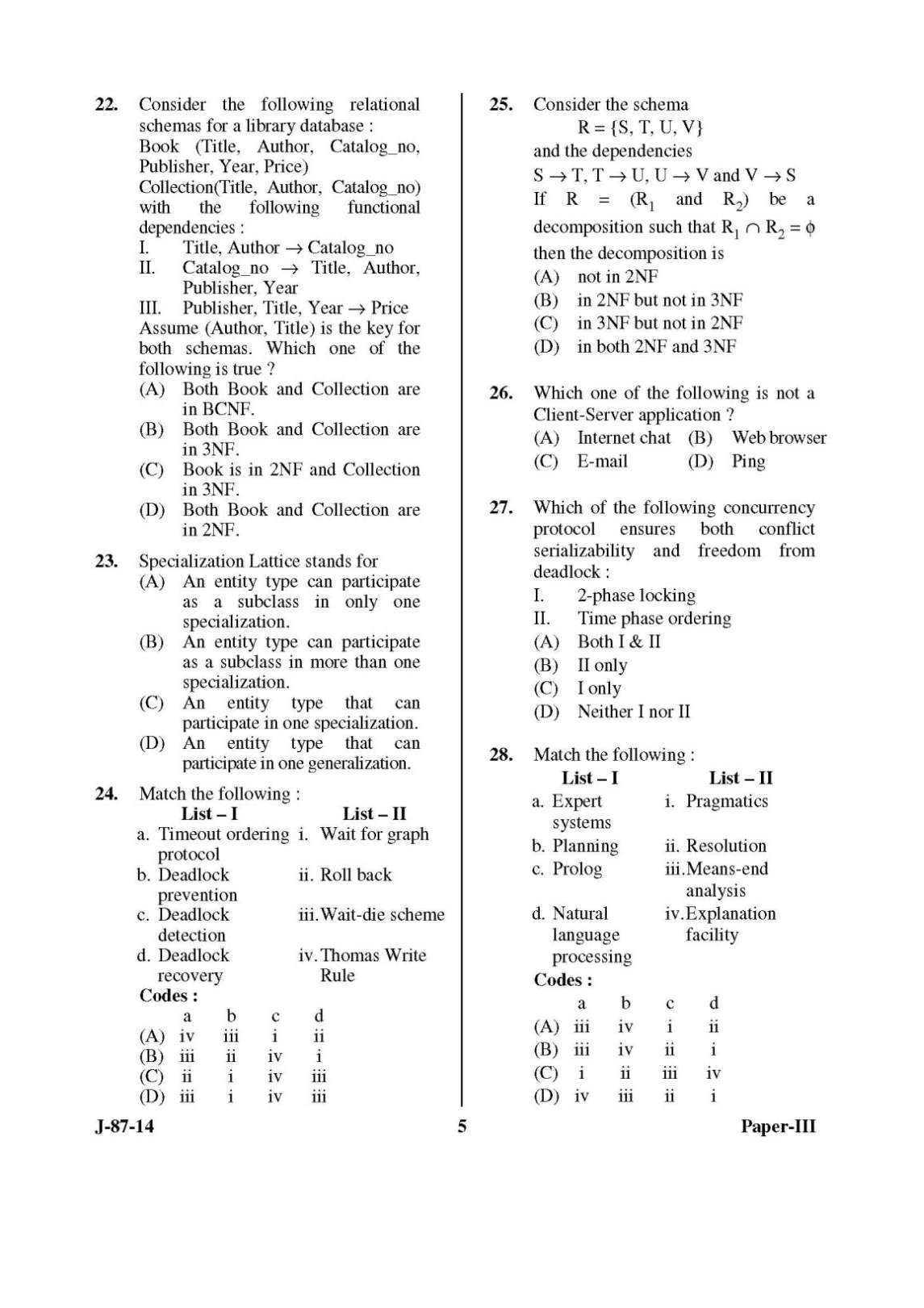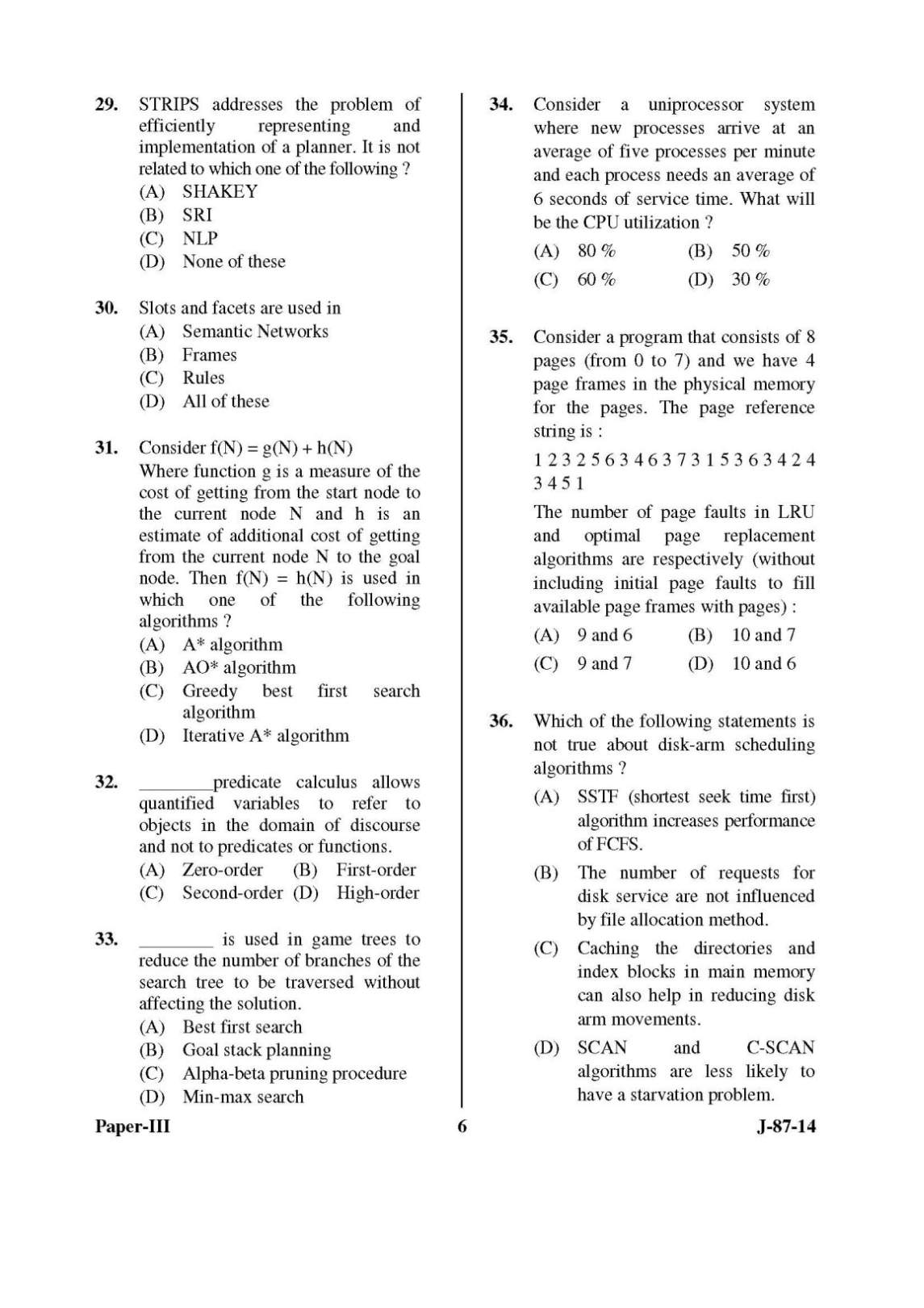|
#2
8th December 2014, 08:56 AM
| |||
| |||
| Re: NET Exam Computer Science III Question Paper
As you want to get UGC NET Computer Science III Question Paper, so here I am giving you some questions of that paper: 1. Beam-penetration and shadow-mask are the two basic techniques for producing color displays with a CRT. Which of the following is not true ? I. The beam-penetration is used with random scan monitors. II. Shadow-mask is used in rasterscan systems. III. Beam-penetration method is better than shadow-mask method. IV. Shadow-mask method is better than beam-penetration method. (A) I and II (B) II and III (C) III only (D) IV only 2. Line caps are used for adjusting the shape of the line ends to give them a better appearance. Various kinds of line caps used are (A) Butt cap and sharp cap (B) Butt cap and round cap (C) Butt cap, sharp cap and round cap (D) Butt cap, round cap and projecting square cap 3. Given below are certain output primitives and their associated attributes. Match each primitive with its corresponding attributes : List – I List – II a. Line i. Type, Size, Color b. Fill Area ii. Color, Size, Font c. Text iii. Style, Color, Pattern d. Marker iv. Type, Width, Color Codes : a b c d (A) i ii iii iv (B) ii i iii iv (C) iv iii ii i (D) iii i iv ii 4. Consider a window bounded by the lines : x = 0; y= 0; x = 5 and y = 3. The line segment joining (–1, 0) and (4, 5), if clipped against this window will connect the points (A) (0, 1) and (2, 3) (B) (0, 1) and (3, 3) (C) (0, 1) and (4, 3) (D) (0, 1) and (3, 2) 5. Which of the following color models are defined with three primary colors ? (A) RGB and HSV color models (B) CMY and HSV color models (C) HSV and HLS color models (D) RGB and CMY color models 6. In a digital transmission, the receiver clock is 0.1 percent faster than the sender clock. How many extra bits per second does the receiver receive if the data rate is 1 Mbps ? (A) 10 bps (B) 100 bps (C) 1000 bps (D) 10000 bps 7. Given U = {1, 2, 3, 4, 5, 6, 7} A = {(3, 0.7), (5, 1), (6, 0.8)} then ~A will be : ( where ~ ® complement) (A) {(4, 0.7), (2, 1), (1, 0.8)} (B) {(4, 0.3), (5, 0), (6, 0.2) } (C) {(1, 1), (2, 1), (3, 0.3), (4, 1), (6, 0.2), (7, 1)} (D) {(3, 0.3), (6.0.2)} 8. Consider a fuzzy set old as defined below Old = {(20, 0.1), (30, 0.2), (40, 0.4), (50, 0.6), (60, 0.8), (70, 1), (80, 1)} Then the alpha-cut for alpha = 0.4 for the set old will be (A) {(40, 0.4)} (B) {50, 60, 70, 80} (C) {(20, 0.1), (30, 0.2)} (D) {(20, 0), (30, 0), (40, 1), (50, 1), (60, 1), (70, 1), (80, 1)} 9. Perceptron learning, Delta learning and LMS learning are learning methods which falls under the category of (A) Error correction learning – learning with a teacher (B) Reinforcement learning – learning with a critic (C) Hebbian learning (D) Competitive learning – learning without a teacher 10. Code blocks allow many algorithms to be implemented with the following parameters : (A) clarity, elegance, performance (B) clarity, elegance, efficiency (C) elegance, performance, execution (D) execution, clarity, performance For full question paper here I am giving you attachment: UGC NET Computer Science III Question Paper      |